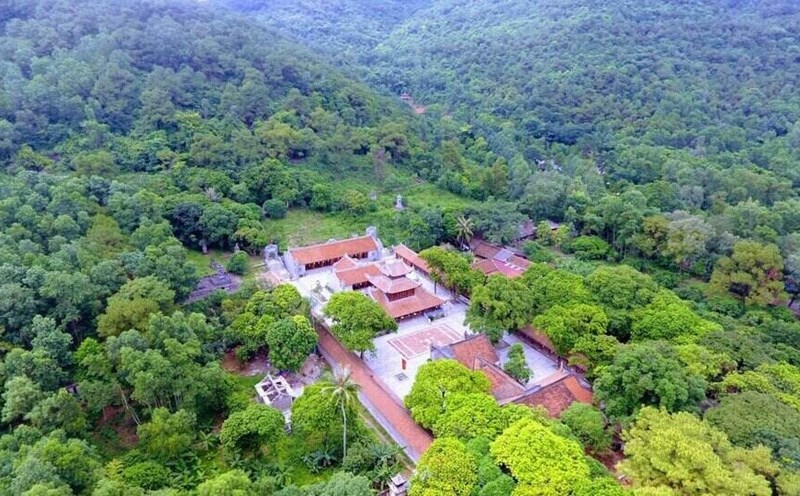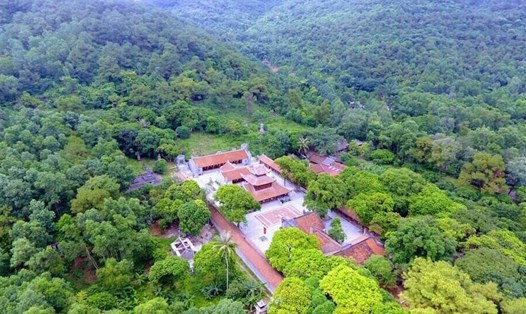New destination - a prominent trend of luxury tourists
The Intentional Traveller report published last July by Marriott International Luxury Group - a collection of the world's leading luxury hotel brands under Marriott International, conducted with 1,750 super-rich individuals (UHNW) in the Asia - Pacific, shows that their top goal when traveling is no longer just to rest, but to explore new destinations.
Australia tops the list of options, followed by Japan and China. However, it is worth noting that instead of focusing only on familiar big cities, tourists are heading to lesser-known small cities. In Japan, it is Fukuoka and Nagasaki next to Tokyo or Osaka; in Australia, Brisbane, Perth and Canberra are gradually parallel to Melbourne and Sydney.
The report emphasized: The important thing is not to choose an interesting destination, but to explore and experience its inherent values more deeply. Other outstanding new destinations include Bangladesh with the historic capital of Dhaka and green forest nature, or New Zealand with majestic landscapes, which both bring privacy and sophistication to high-end tourists.
In Vietnam, Phu Quoc and Ha Long are becoming the focus. Mr. Tom Rowntree - Vice President of the High-end Brand segment of IHG hotels & Resorts, said that Phu Quoc has entered the luxury tourism map, while Ha Long Bay is increasingly attracting international visitors combined with the Hanoi itinerary. This assessment was shared at the Asia-Pacific International International Investment Tourism Fair (ILTM) held in Singapore, which gathered more than 700 luxury travel consultants from 22 countries.
Not only looking for a new city, tourists also choose other means of transportation to enjoy the journey. Donny Yip - Senior Director for Asia - Pacific Business at Small Luxury hotels of the World - said that high-speed railway has opened a new way of discovery: Starting from a large city, then continuing the journey through many small cities in just a few hours. China is a typical example, when the rail network allows tourists to easily "combine" many destinations on the same trip.
In addition to trains, road trips have also become an attractive choice. Young couples love driving through rural Japan, stopping in small towns to enjoy culture, cuisine and explore surprises on the road. In Southeast Asia, Bali still retains its appeal, but instead of the crowded Seminyak or Canggu, luxury customers are looking for a more peaceful return to Uluwatu or Ubud. In Thailand, Ko Chang or Khao Yai emerged thanks to the trend of glamping (luxury camping).
This shift shows a clear trend: Tourists seek more realistic, integrated and sustainable experiences, instead of just familiar tourism symbols.
Destination associated with story
Along with the journey of discovery, super-rich tourists are increasingly interested in personalized story and experience elements. Mr. James Koh, an industry expert, said that many families choose destinations based on educational values, especially for children. For example, a trip to Europe is not only to visit Germany, but to live in the space of castles, connecting with history and culture.
This is also reflected in the way luxury hotels and resorts market. People dont buy what you sell anymore, they buy why, Koh emphasized, referring to the exclusive, uncopiable experience that is becoming a key difference.
In Japan, the city of Sapporo is gradually becoming a new destination for the upper class. According to Mr. Benjamin Leitgeb - General Director of InterContinental Sapporo, the opening of the first luxury 5-star hotel here will help the city retain international visitors, instead of just a transit point to Niseko during the ski season. With 54 Michelin restaurants, wine festivals and diverse winter experiences, Sapporo brings the image of a small TikTok but closer and less crowded.
Not only on land, luxury yachts are also becoming a popular choice. Brands such as Aman, Regent or The Ritz-Carlton have joined this market. explora Journeys, with a small fleet and sophisticated itinerary, takes visitors to hard-to-reach seaports such as Portofino, Capri of Italy or Paxos of Greece. Mr. Achille Staiano - Commercial Director of the company, emphasized: "You can't go to these places quickly without ships like ours".
These experiences meet the dual needs of luxury tourists: both enjoying luxury and touching new things and connecting with nature and indigenous culture.
The above trends show that luxury travel is changing. Instead of focusing on money for amenities, wealthy travelers increasingly value the value of discovery, the story, and sustainability. A trip is no longer a passive experience, but becomes a journey to learn, to connect and to enrich personal experiences.
At a broader level, this opens up a new direction for the tourism industry: Investing in smart connectivity infrastructure, building experience products associated with local identity, and most importantly, evoking emotions in tourists. Because in the end, the value of a trip is not only the place you have arrived, but the story that each person carries with them when returning.








